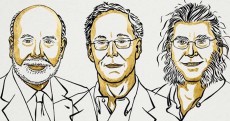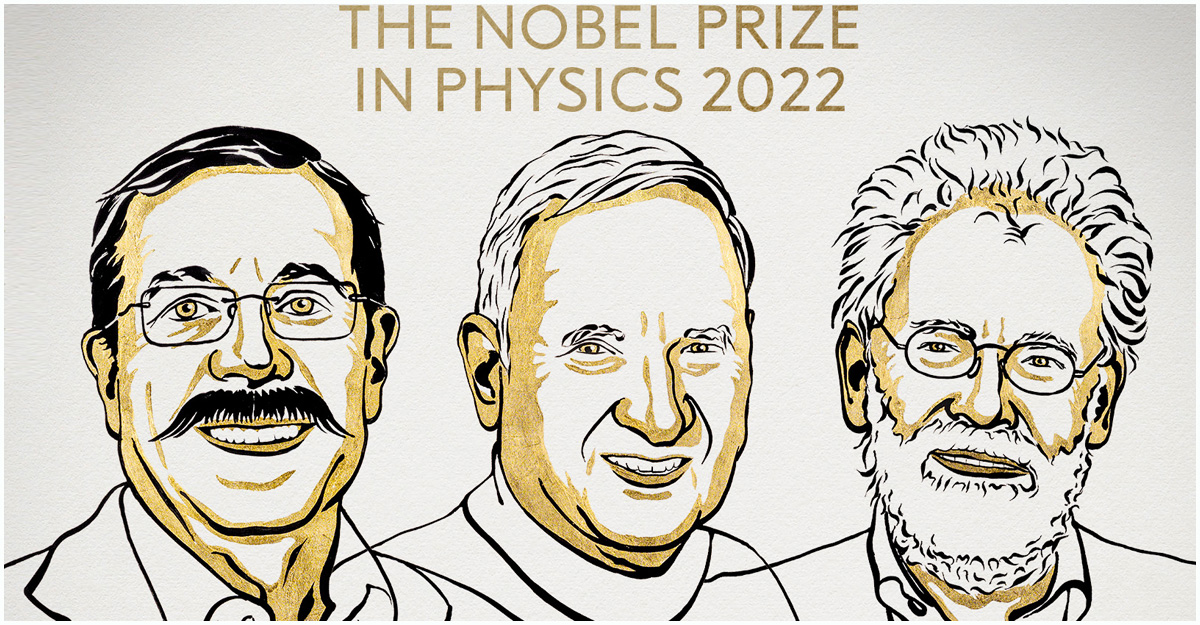
05 October, 2022 17:15

The 2022 Nobel Prize in physics has been awarded to three researchers for their pioneering experiments in quantum information science, a burgeoning field that could revolutionize computing, cryptography and the transfer of information via what is known as “quantum teleportation.”
The three physicists are John F. Clauser, 79, of Walnut Creek, Calif., Alain Aspect, 75, of the Université Paris-Saclay and École Polytechnique in France, and Anton Zeilinger, 77, of the University of Vienna.
The physicists honored Tuesday found experimental ways to confirm what had previously been theorized, including the “entanglement” of photons (particles of light) in a phenomenon that Albert Einstein famously referred to as “spooky action at a distance.” As the Royal Swedish Academy of Sciences put it Tuesday: “What happens to one particle in an entangled pair determines what happens to the other, even if they are really too far apart to affect each other. The laureates’ development of experimental tools has laid the foundation for a new era of quantum technology.”
For Clauser, the honor was a long time in coming.
“This is all for work I did more than 50 years ago,” he said, clearly elated Tuesday morning when reached at his home.
As a graduate student at Columbia University, where he received his doctorate in 1969, “I was struggling to try to understand quantum mechanics, unsuccessfully. Didn’t understand what I didn’t understand,” he said.
But then he came across a paper by the physicist John Bell that suggested that quantum theory and a rival set of theories, known as “hidden variables,” were inconsistent with one another. Clauser thought: “If there’s a difference between the two, it must be testable.”
After Clauser moved to the University of California at Berkeley, he and colleagues rummaged through storage rooms for supplies, found “scrap hanging around in the physics department” and cut metal in a shop. “We didn’t have any money to spend, so we had to build everything from scratch ourselves,” he said. The result was a 30-foot-long apparatus that could beam photons — particles of light — in opposite directions.
In 1972, Clauser and doctoral student Stuart Freedman — who died in 2012 — reported that their experiment detected entanglement consistent with predictions of quantum mechanics, according to the academy.
Clauser said he was surprised by the result, which contradicted Einstein’s views on quantum mechanics.
“Einstein assumed that nature consists of stuff, distributed throughout space, including bits of information and the like. That seems very reasonable. And, in fact, general relativity is based on that. What the experiments show is that is not true,” Clauser said. “You can’t localize bits of information in a small, finite volume. That simple result then has applications that extend to quantum encryption and other forms of quantum information theory.”
Clauser said he still had not been contacted by officials from the Royal Swedish Academy of Sciences when The Washington Post called, and that he had learned of the prize from a “fan” who had followed his work over the years. A rash of media interviews ensued. Traditionally, recipients of a Nobel Prize are given no advance notice and are contacted by phone just before the announcement.
Zeilinger did get a call about an hour before the announcement.
“I’m still kind of shocked,” Zeilinger said during a news conference at the academy.
When asked by a reporter if, in 10,000 years, it will be possible to teleport one’s own body to another place, he answered that the teleportation of people is “science fiction.”
Clauser echoed that in his interview with The Post: “I wouldn’t step into a quantum teleporter, if one were available.”
Quantum mechanics is an area of physics going back more than a century, and it has yielded applications, including transistors and lasers, that people use in everyday life. But the potential applications of the principles of quantum mechanics appear limitless.
As a doctoral student, Aspect improved the efficiency and clarity of the earlier experiments by Clauser, and Zeilinger then explored systems that used more than two entangled particles, the academy said. The three new Nobel laureates have been honored as a trio before, having won Israel’s Wolf Prize in physics in 2010.
Eva Olsson, a professor of experimental physics and a member of the Nobel committee for physics, said Tuesday that quantum information science is a rapidly developing field with many potential applications in information transfer and sensing technology.
“Its predictions have opened doors to another world,” she said, “and it has also shaken the very foundations of how we interpret measurements.”
The honor bestowed on the three physicists drew praise from fellow physicist Stephen Bartlett of the University of Sydney, who is the lead editor of the American Physical Society’s journal, PRX Quantum.
The experiments “brought into focus the most striking and challenging aspects of quantum physics,” Bartlett said in an email. “Specifically, they demonstrate that ‘entangled’ quantum particles behave in a way completely at odds with our notions of how independent, separate objects should behave.”
Quantum theory may be weird and notoriously abstruse, but it is foundational to modern physics.
Frances Hellman, president of the American Physical Society and a University of California at Berkeley physics professor, said the Nobel laureates bolstered the theory through rigorous experiments conducted early in their careers. “That work is now inspiring young people all over the world to work on foundational quantum mechanics and its applications,” she said.
At the news conference in Stockholm, Zeilinger said, “The prize would not be possible without more than 100 young people who worked with me over the years.”
Thors Hans Hansson, a theoretical physicist and also a member of the Nobel committee for physics, told reporters that the pioneering experiments “showed us that the strange world of entanglement and Bell pairs is not just the microworld of atoms, and certainly not the virtual world of science fiction or mysticism, but it’s the real world that we all live in.”
The academy’s physics prize tends to rotate through the many disciplines within the sprawling physics enterprise, which covers topics as varied as subatomic particles and the origin of the universe. Last year, the prize focused on climate change. It went to Syukuro Manabe of the United States and Klaus Hasselmann of Germany for research on human influence on climate, and Giorgio Parisi, an Italian theorist whose work described fluctuating systems at different physical scales.
In 2020, black holes were the focus of the academy, which awarded prizes to astrophysicists Andrea Ghez of the United States and Reinhard Genzel of Germany, as well as to the British mathematical physicist Roger Penrose.
আপনার মন্তব্য